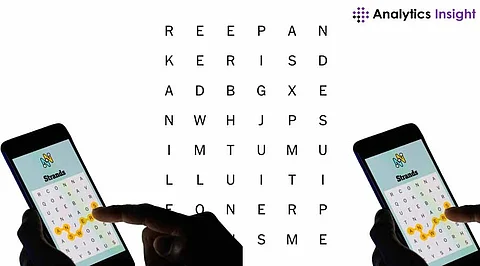

The New York Times launched a new suite of word games, called "Strands," in March 2024 and it took the daily word search arena by storm. Known for its twists and turns, Strands is taking just minutes for newcomers to fall in love with it. NYT Strands are developed by Juliette Seive and edited by Tracy Bennett, challenges players to find themed words in a 6x8 letter grid whose words can bend in any direction. This new manner of finding words has attracted the attention of puzzle nuts and casual gamers alike.
Unlike ordinary word searches, the words in Strands are free to twist and turn in any direction, making for some more complicated solvinig. Puzzles are based upon a single theme, and players are given the associated clue and total amount of words. The users need to find all words that are related to the theme to discover them. For instance, each puzzle carries a "spangram" — a word or phrase that sums up the theme and covers the two opposite edges of the grid. If found early in the game, Spanagram can lead the players to all the answers almost instantly.
1) Start with the Theme
a) Every puzzle revolves around a specific theme. Use the clue provided as your starting point to identify related words.
b) Think broadly about the theme to uncover less obvious words. For example, if the theme is "Winter Sports," look for terms like "skiing" or "sledge."
2) Scan the Grid Strategically
a) Begin by scanning the grid horizontally, vertically, and diagonally for obvious patterns or letters forming partial words.
b) Work systematically from one corner to another instead of jumping around randomly.
3) Use the First Letter Clue
a) Often, spotting the first letter of a word can lead you to the rest of the word. Look for connections branching out from that initial letter.
4) Follow the Path
a) Words in Strands can twist and bend. Follow potential paths step by step, especially when letters seem to align near each other.
b) Avoid retracing a letter you've already used, as each letter is part of one word only.
5) Focus on Smaller Words First
a) Solving shorter words can open up the grid, making it easier to decode larger and more complex words.
Hint: Think of the words that indicate culmination of something.
These are the words associated with the ending.
The New York Times’ Wordle and Connections are both very popular word games and joining this rich field is NYTStrands. This new offering is part of a broader goal from the publication to expand its varied offering of gaming services and deliver intellectually challenging activities to its readers. Daily new puzzles release keeps regular engagement up, and the community of avid players who like challenges and amusement.
The Spanagram is usually the toughest thing. First of all, solve all the small words to reduce the inventory of used letters. It’ll help make spotting the Spanagram easier.
1) Understand the Spanagram
a) The Spanagram is a word or phrase related to the puzzle’s theme, spanning two opposite edges of the grid. It’s typically the longest and most intricate word or phrase.
2) Identify Starting and Ending Points
a) Look for letters on the edges of the grid that might serve as starting and ending points for the Spanagram.
b) Pay attention to the clue, as it often hints at the Spanagram's structure.
3) Group the Remaining Letters
a) Once other words are found, the remaining letters often form the Spanagram. Rearrange these letters mentally or on paper.
4) Think of Related Phrases
a) If the theme is "Cooking Tools," and the Spanagram clue suggests a two-word phrase, think of terms like "chef's knife" or "mixing bowl."
5) Test for Connections
a) The Spanagram path will curve through the grid, touching several intermediate letters. Test plausible connections by mentally tracing potential paths.
6) Spot Common Letter Patterns
a) Look for common prefixes, suffixes, or letter pairings (e.g., "to," "ing," "er") to piece together the Spanagram.
December 31 NYT Strands Spangram is: Vertical.
Spanagram for December 31 is ‘ItsOver.’
Pro Tip: Use the Undo Button
If a guessed word doesn’t fit or feels off, don’t hesitate to use the undo button. It’s your best friend when recalibrating and finding the right solution.
Finale
Ending
Closure
Conclusion
Epilogue
Coda
ItsOver
Strands is a fine example of word search elements successfully fused with modernized gameplay mechanics where everyone will be able to find a successful daily mental challenge. Apart from The New York Times' suite of games, one of the things the publication has done is integrate this into its suite of games. The game is a testament to the persistent popularity of word puzzles in the digital age, as players explore twisting paths of Strands, the game continues.
